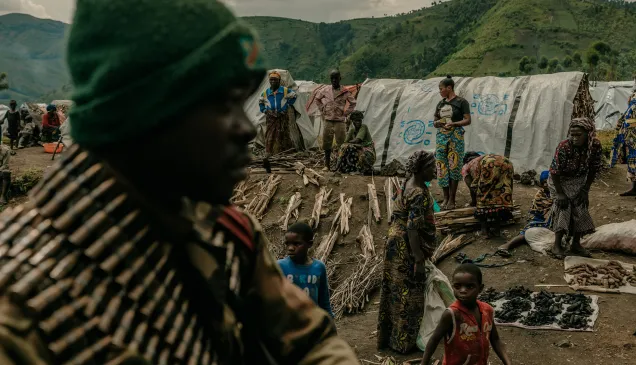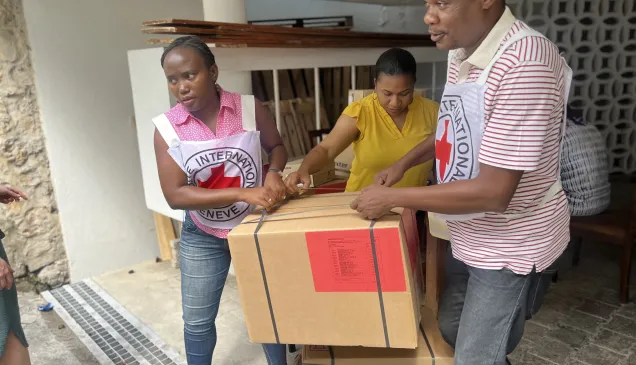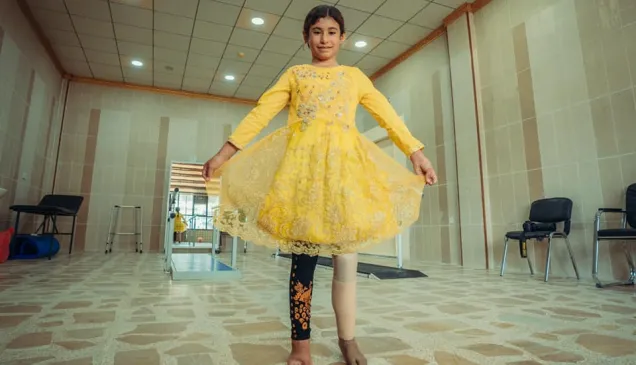Brazil: Protecting schools from attacks in 2022
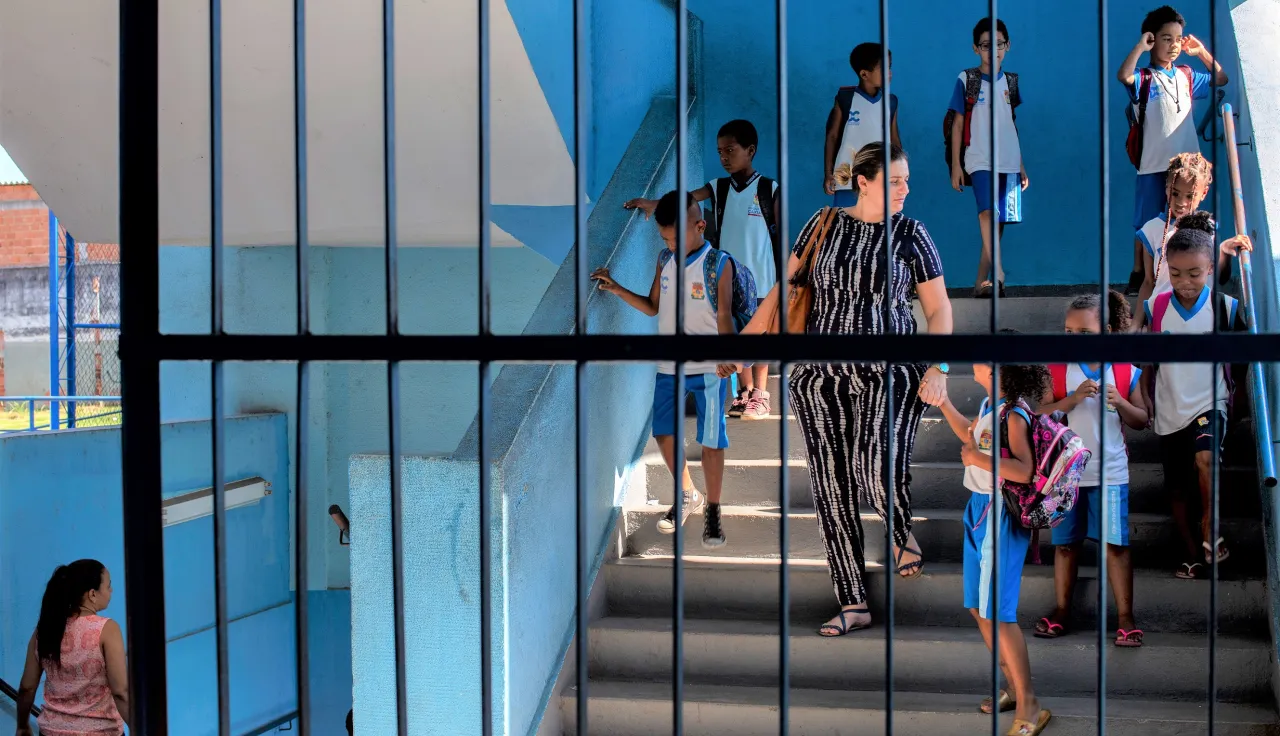
As we mark the International Day to Protect Education from Attack, a school principal and director at a municipal school in Rio de Janeiro speaks to us about the impact of the Safer Access Programme on their school.
How the ICRC works to empower schools
In our operations around the globe, the International Committee of the Red Cross (ICRC) works to empower school communities and ministries of education to manage the consequences of conflict and violence by protecting education from attack and making access to education safer.
One of these initiatives is the Safer Access for Essential Public Services program (AMS) in Rio de Janeiro, Brazil, which has positively impacted the city's 534 municipal schools in areas affected by armed violence.
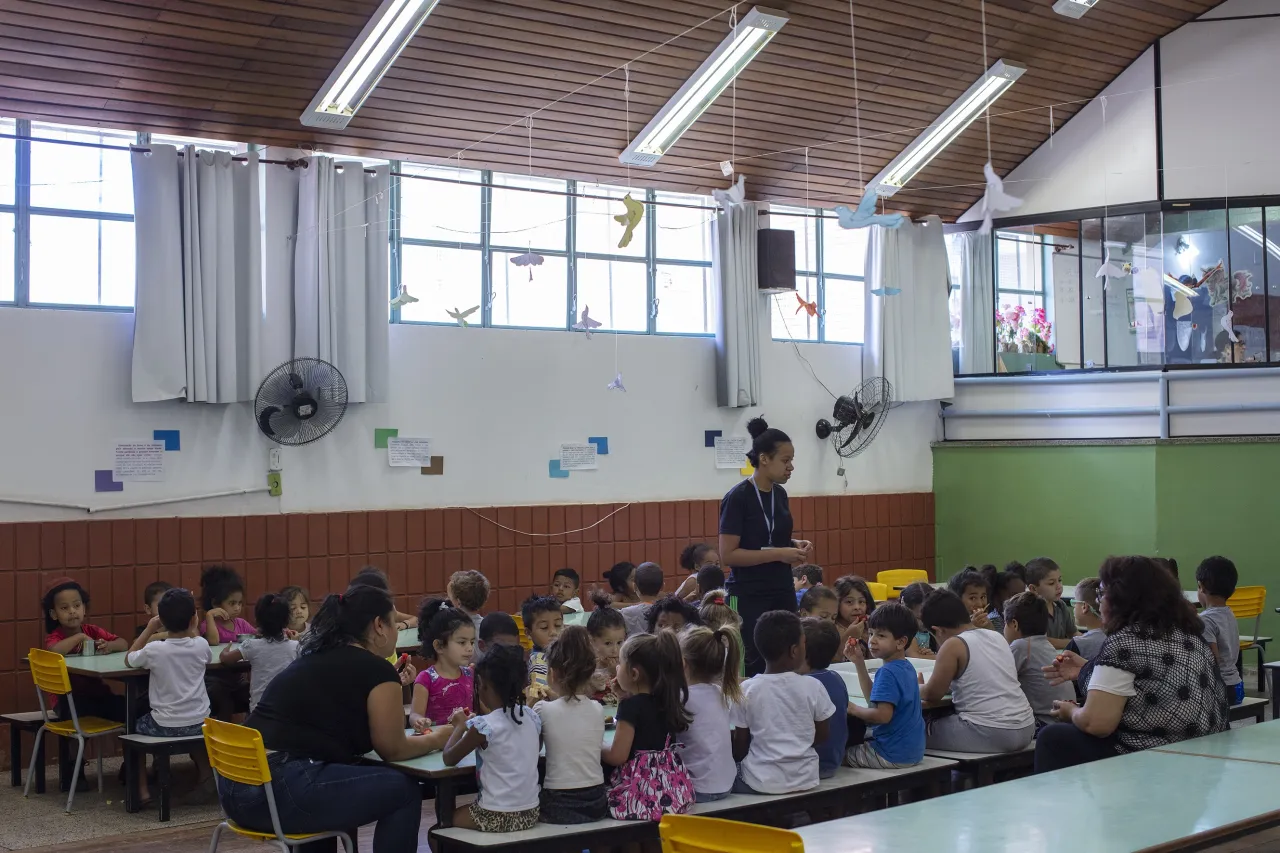
The Safer Access for Essential Public Services (AMS) program is a risk-management methodology adapted by the ICRC to prevent, reduce, and mitigate the consequences of armed violence on education and health services. This includes the schools, children, families and professionals in selected communities in seven states of Brazil: Fortaleza; Vila Velha; Duque de Caxias; Rio de Janeiro; São Paulo; Porto Alegre and Florianópolis.
The Safer Access program has had promising results, significantly reducing the number of days schools are closed due to armed violence and improving access to education for children and young people. More than 39,000 professionals have been trained in Safer Access and Safer Behavior, and more than 800 schools are adopting measures to protect professionals, students, and the school communities dealing with the impact of armed violence.

As we mark the International Day to Protect Education from Attack, Adriano Souza, director at CIEP Hélio Smidt since 2018 in Rio de Janeiro, speaks to us about the impact of the Safer Access Programme on their school.
Please tell us about your school and how it operates.
Our school covers the initial stages of elementary education – from the first to sixth grade – and special classes that support students with disabilities. It operates in a single session, meaning that the children attend classes for seven hours, with courses that cover the common curriculum and the diversified parts. Today, we have 14 regular classes from the first to the sixth grade and two special classes.
It's located in a dangerous and notorious area of our city. The territory is extremely tough to access, and armed clashes frequently occur there, requiring responses from police forces.
How have you been involved in the Safer Access for Essential Public Services (AMS) project, and what has been the impact on your school?
I had the distinct opportunity to take part in implementing AMS at our school two different times: the first, while I was teaching classes, I was selected by the manager - at that time – to participate in the meetings to take over the program, as well as to talk with the staff at the school unit about the program and replicate the lessons learned during training. In 2018, when we joined the school's management, I helped draw up the plan and oversee its implementation there. This is the second phase.
The AMS program not only provides safe access but also gives stability and confidence in how to act safely when confronted by a violent situation involving firearms.
Can you explain how the AMS program helps to provide greater access to education?
AMS has equipped us with the knowledge needed to have safe access to our workplace if a violent event occurs before the students arrive at the school. Plus, we know how to behave safely when a violent incident occurs during class. And so, we don't need to close the school building for just any reason without first assessing the actual need, as we needed to do before the program was implemented, where each school would make a decision. We'd have several actions taken in the same territory, resulting in more days of closed schools. As such, AMS has played a decisive role in there being more days when the school remains open, and this is rather important within the context of our territory. To illustrate, violent events in 2017 forced us to close the school for 17 days (the AMS program was in the appropriation process). In 2018, we experienced only seven days of school closure when the program was already up and running. The numbers don't lie.
Another significant contribution by the AMS involves crisis management after a violent event. The day after a violent event, we plan to come in early and leave early. This allows us to create spaces for dialogues between the management and the professionals working at the school to listen to them, learn about their perspectives on the event, devise strategies for receiving students in the classroom the following day, and for creating spaces for them to express their feelings and their perceptions about the incidents they went through. This strategy makes them feel valued, loved and cared for, keeping them in school.
Does the school community- parents, teachers, and children- know about AMS?
They have heard of the program, but the extent of the AMS action plan differs for each community segment. Parents and students know that we have a security protocol but don't have the power to decide whether to open or close the unit because the school's management takes this action, and the plan provides this measure. The professors and staff have a deeper understanding of it because each has a role ranging from keeping all the contacts updated to deciding whether to close, representing the most extreme case.
Every child deserves to access quality education, but this becomes impossible when schools are deliberately targeted during armed conflict or because of their closeness to the battlegrounds. Violence upon and near schools affects children, teachers, support staff and infrastructure. Too often, this violence flouts international humanitarian law and international human rights law, which specifically protect children and their education.
School closures and a lack of teachers in schools located in areas heavily affected by violence are examples of the direct consequences of violence on education. In the long run, these consequences can lead to a rise in school dropouts, drops in school achievement, age-grade distortion, food insecurity, and later difficulties in entering the labour market due to the lack of qualifications and preparation, with negative impacts on societal development and security.
Additionally, when schools close due to conflict, children and young people are exposed to child-protection risks and negative coping strategies such as child marriage, child labour and child recruitment, risking closer association with armed groups.
Main Objectives of Safer Access for Essential Public Services (AMS)
- Protect lives, promote safe environments and strengthen the resilience of professionals.
- Develop, together with partner authorities, strategies for efficient and effective risk management.
- In the face of armed violence, promote changes in the knowledge, behaviour and posture of professionals and managers.
- Improve overall service efficiency and optimise the use of human and financial resources.
Resources for further reading:
ICRC report on IHL and the challenges of contemporary armed conflicts
IHL in action: Iraq, Peshmerga Forces' First Code of Conduct
Transforming Education Summit - good practice collection: Safer Access Programme

